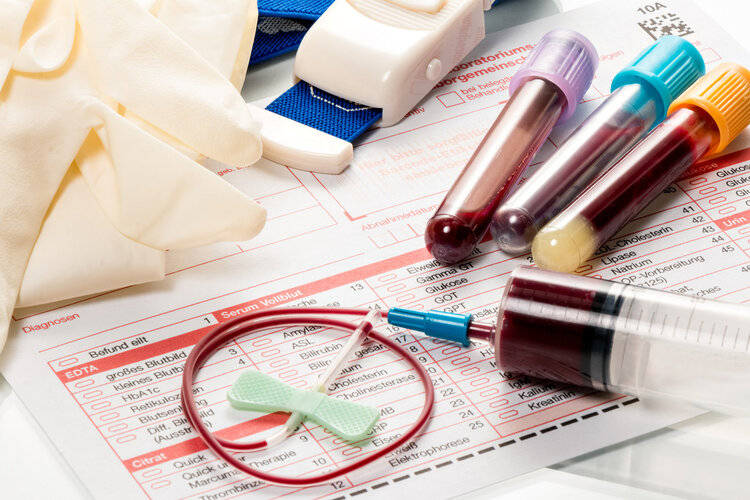Mr. Wang is 45 years old this year. Last week, after getting off work from the company and returning home, he suddenly experienced severe abdominal pain symptoms. Upon going to the hospital for examination, it was found that his triglyceride level had reached 22.5mmol/L, which is 13 times the normal value. The blood drawn from his veins was as thick as milk. His abdominal pain symptoms were caused by high blood lipids leading to acute pancreatitis. He was immediately “detained” by doctors for inpatient treatment.
In response to this, Mr. Wang was a bit puzzled. He has always had a habit of regular check-ups, focusing more on cholesterol levels before and not paying much attention to triglyceride levels. The doctor informed him that the high triglyceride level could lead to acute pancreatitis with a mortality rate as high as 30%! Fortunately, he sought medical help in time this time, or else the consequences would have been unimaginable.
Many people may have the same issue as Mr. Wang, focusing on cholesterol levels during check-ups and not paying much attention to triglyceride indicators. However, an increase in triglyceride levels can indeed cause real harm to the body.
1. How high is considered high triglycerides?
Triglycerides are one of the fats synthesized in the body, present throughout the body, primarily used for storing and transporting energy. Its main sources include obtaining from food and synthesis in the liver/adipose tissue through carbohydrates.
While triglycerides are essential sources of energy for the body, excessively high levels can also cause harm to health. Elevated triglyceride levels in the blood can lead to increased blood viscosity, allowing more cholesterol to accumulate on the blood vessel walls, gradually forming small plaques, triggering conditions like atherosclerosis, coronary heart disease, and stroke.
A study found through follow-up surveys of 64,574 individuals that subjects with triglyceride levels >1.66mmol/L had a 59% increased risk of heart attack compared to those with <1.02mmol/L. As triglyceride levels rise, the cumulative risk of a heart attack also increases. Among all blood lipid indicators, triglycerides are an independent predictor of heart attacks.
Moreover, many studies have found that elevated triglyceride levels not only easily lead to the occurrence of cardiovascular and cerebrovascular diseases but also increase the risk of acute pancreatitis, a very dangerous condition!
Normally, triglyceride levels should be maintained between 0.56 to 1.7mmol/L, with lower levels being better within this range. The diagnostic criterion for high triglyceridemia is ≥2.26mmol/L; exceeding this standard is considered high triglyceride levels. If the level is between 1.7 to 2.26mmol/L, it is considered marginally elevated.
2. Severe Underestimation of the Risks of High Triglycerides, Which Can Lead to Four Diseases
If triglyceride levels rise without timely intervention, it can have significant negative effects, increasing the incidence of several diseases.
1. Increased Insulin Resistance
The likelihood of high triglyceride levels in obese type 2 diabetes patients is significantly increased, and these individuals often have insulin resistance issues.
2. Increased Risk of Fatty Liver
Rising triglyceride levels often indicate insulin resistance and nutrient excess, resulting in the liver being unable to metabolize all the triglycerides. Excessive triglycerides accumulate in liver cells, leading to the development of fatty liver.
3. Increased Atherosclerosis Risk
High triglycerides can likely induce atherosclerosis because lipoproteins rich in triglycerides can directly trigger atherosclerosis. Elevated triglyceride levels often accompany other lipid abnormalities, such as low levels or dysfunctional high-density lipoprotein cholesterol, also triggering atherosclerosis.
4. Chronic Kidney Disease
Elevated triglyceride levels can also lead to the occurrence of chronic kidney disease, and in most cases, both diseases coexist. In patients with chronic kidney disease, fatty acid synthesis increases, leading to inhibition of lipoprotein lipase activity, resulting in reduced triglyceride degradation and an increased risk of high triglyceride levels.
3. Foods to Avoid to Prevent High Triglycerides
Among the four blood lipid indicators, triglycerides are the most influenced by diet. Reducing fat intake from diet can lower triglyceride levels. For Chinese individuals, specific approaches are required to lower triglyceride levels based on individual circumstances.
• Mild Elevation: 1.7 to 5.7mmol/L – After excluding secondary factors, lifestyle improvements are recommended to prevent the occurrence of cardiovascular diseases. If there is a higher risk of developing diseases, medication can be taken as prescribed to prevent diseases.
• Severe Elevation: >5.7mmol/L – Apart from lifestyle improvements, medication is necessary to control the condition.
Regardless of whether triglyceride levels are mildly or severely elevated, changing poor lifestyle habits is essential. Diet plays a crucial role in this, and certain foods should be consumed in moderation.
1. High-Sugar Foods
Sweets may not seem directly related to triglycerides, but long-term intake of high-sugar foods can accelerate disease development.
2. Animal Offal
Animal offal is rich in fat and purines, unfriendly to individuals with high triglyceride levels. It is advisable to eat as little or avoid them as much as possible in daily life.
3. Fried Foods
After food is fried, the levels of fatty acids inside significantly increase. Prolonged consumption can raise serum cholesterol levels, triglyceride levels, and lead to obesity.
4. Alcoholic Beverages
When alcohol enters the body, it is converted to energy. It affects the metabolism of other substances, including triglycerides.
It is crucial to pay sufficient attention to the rise in triglyceride levels and make necessary lifestyle adjustments promptly. If needed, follow medical advice to control the condition.
Sources:
[1] “High Triglycerides, What Does It Indicate? Crossing This Value Is Very Dangerous.” Family Doctor 2024-07-24
[2] “This High Indicator Messes Up Whole-Body Metabolism! 4 Tips to Help You Lower It.” Science Popularization China 2023-12-21
[3] “Triglycerides Associated with 5 Diseases, Control Them If Exceeding This Value.” Life Times 2023-08-15
Reproduction without author authorization is prohibited.


